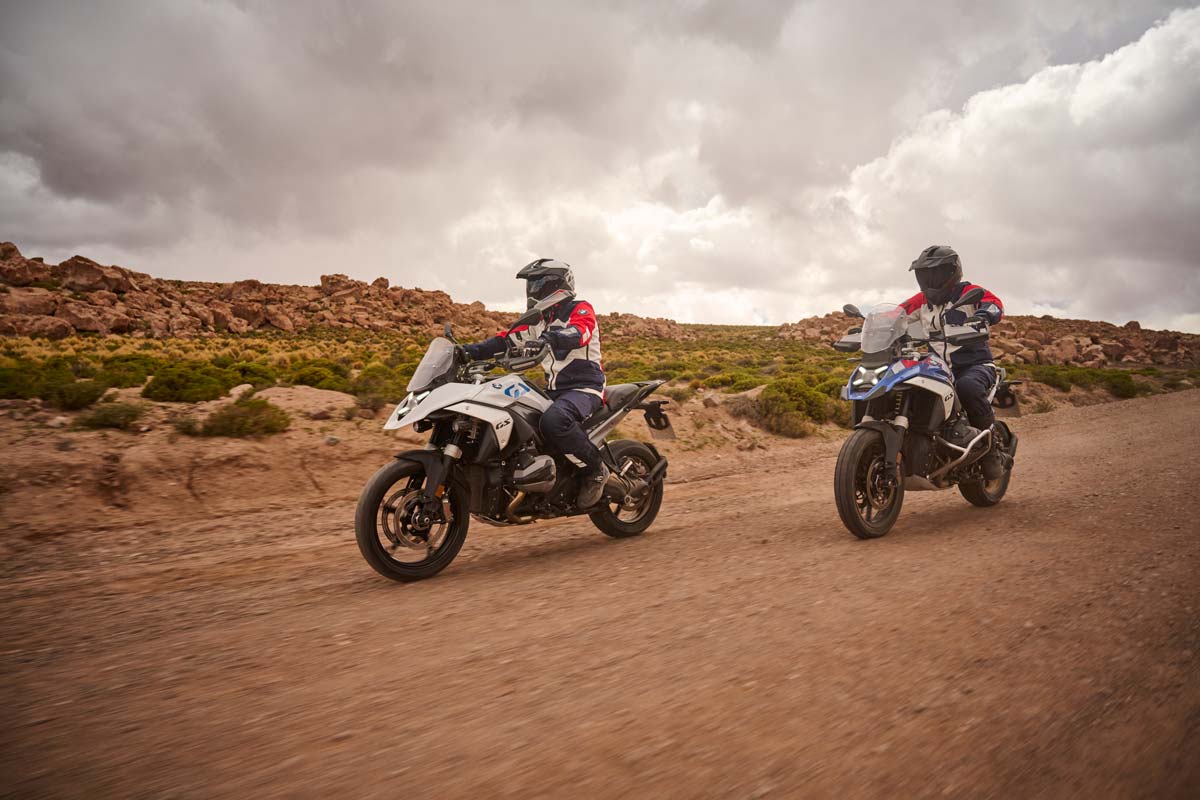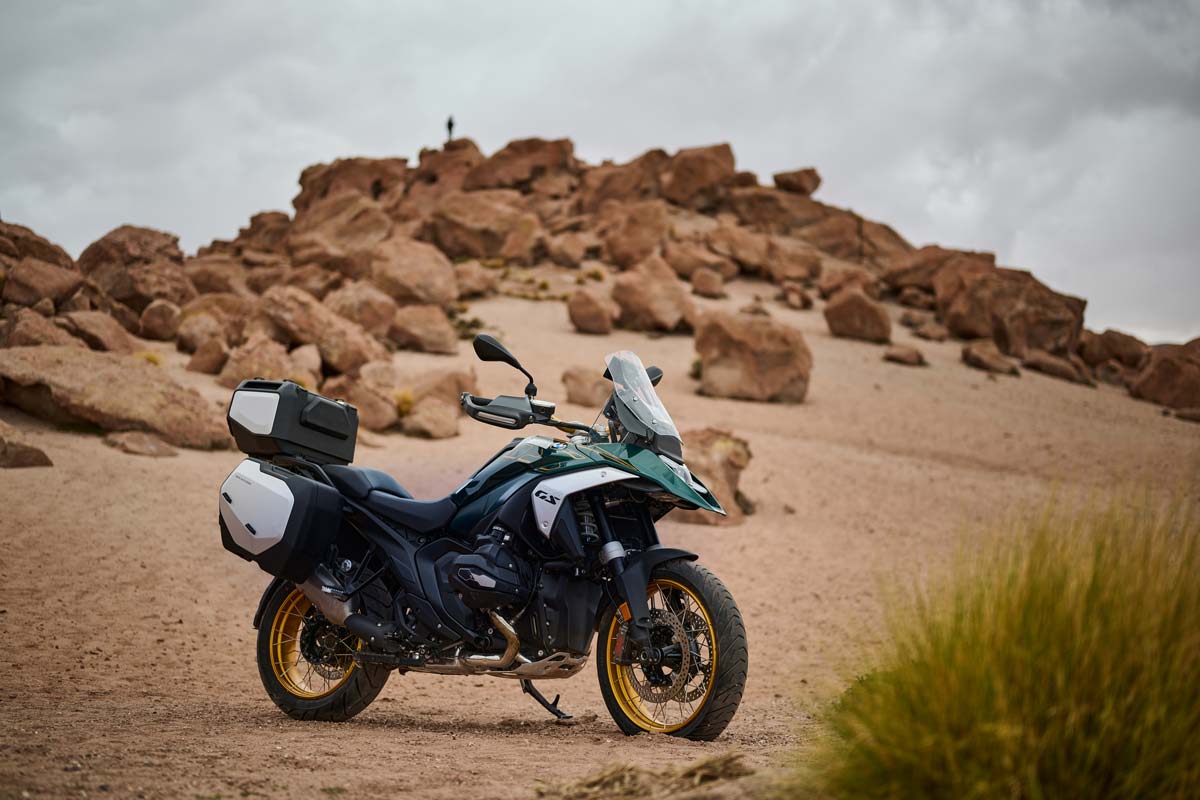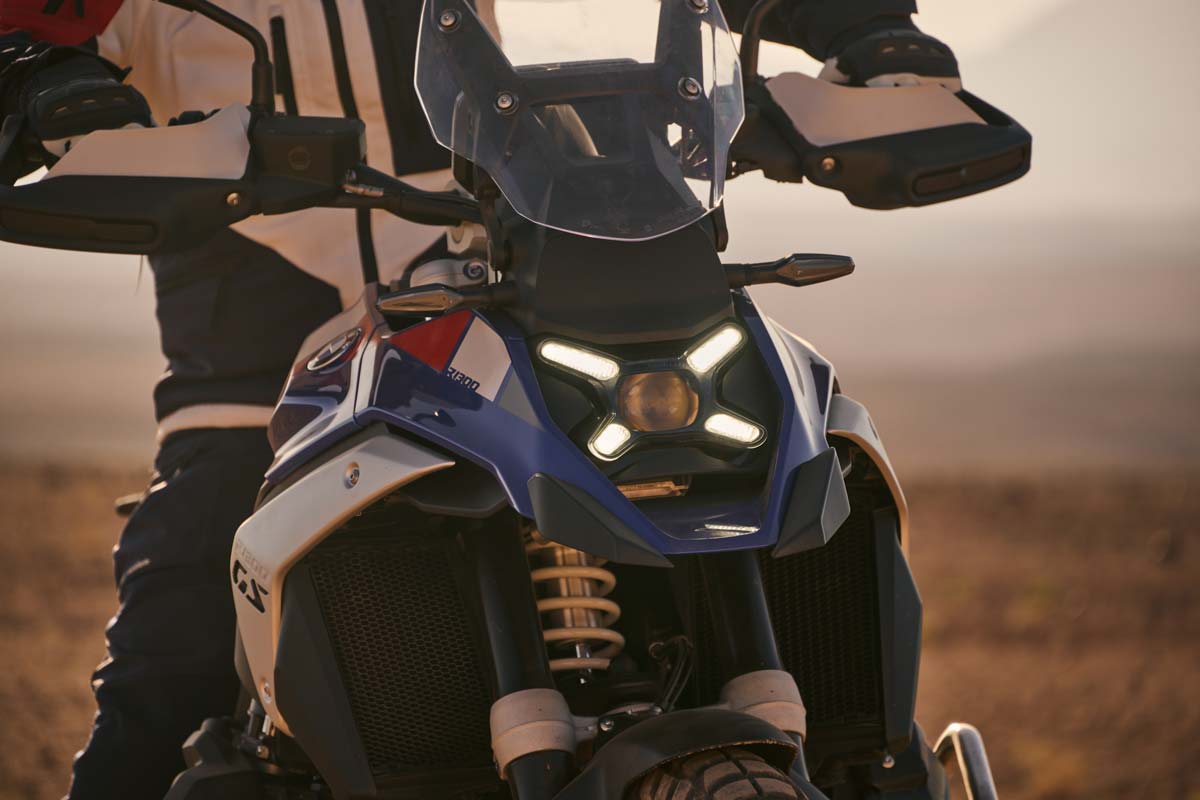With the claim “Next level of GS”, BMW Motorrad weren't kidding when they promised. For the R 1300 GS, the Munich company has unleashed a true fireworks display of innovations: A completely new boxer engine, new frame and extensive revisions to the telelever and paralever.
The new Boxer has his debut in the R 1300 GS
Open-heart surgery is considered highly risky. And yet BMW has once again taken the heart of the R series – the boxer engine – and brought it up to the very latest technical standard. The new boxer makes its debut in the R 1300 GS.
But what is new about the 1300 boxer? Almost everything. So, let's start with what hasn't changed. Contrary to some speculation, BMW has not changed the Boxer completely to water cooling but retains the tried and tested precision cooling. This means that only thermally highly stressed assemblies such as the cylinder heads or parts of the cylinders have coolant flowing through them.
As with the predecessor model, the gas exchange of the Boxer takes place vertically from top to bottom, which makes sense in terms of optimal filling.
ShiftCam with offset timing chain shafts
First of all, the familiar technologies include the variable valve control ShiftCam introduced for the 2019 model year – but now things get interesting. To minimise the offset of the two cylinders, BMW uses a trick. On the right-hand side, the timing chain shaft is located in front of the cylinder, while on the left it is located behind the cylinder. The remaining offset in the longitudinal direction of the vehicle – due to the crank pin – is barely visible.
The new Boxer 145 hp from 1,300 cubic centimetres
The displacement of the latest BMW boxer engine is exactly 1,300 cubic centimetres. From this volume, the engine produces 145 hp at 7,750 rpm, the maximum torque of 149 Newton metres is available at 6,500 rpm. This makes the 1300 Boxer nine hp more powerful than its predecessor. The increase in torque is six newton metres, but in order to witness this, the Twin must be run at 250 revs higher.
The 1300 boxer has the gearbox under the engine
The most profound innovation of the 1300 Boxer, however, concerns the arrangement of the gearbox. Instead of being located behind the engine, the gearbox is now underneath it. From BMW's point of view, there are good reasons to do this: The unit becomes more compact, which benefits the centralisation of the masses, and the drive unit is also lighter thanks to shorter transmission shafts.

Picture ©BMW Motorrad
Electronic assistance systems for more safety
Even in its standard configuration, BMW generously equips the R 1300 GS with electronic assistance systems. For example, the engine drag torque control (MSR), dynamic brake assist (DBC), hill start assist (HSC) and dynamic traction control (DTC) are available to the rider at no extra cost.
Four riding modes as standard for the R 1300 GS
The standard equipment of the R 1300 GS includes the Enduro riding mode, which was previously only available as an optional extra. This mode allows the rear wheel to be blocked even when ABS is activated. In addition to this mode, which is mainly of interest to sporty adventure riders, the R 1300 GS also has Road, Rain and Eco riding modes. Under the designation "Riding Modes Pro", additional options for adjusting the performance characteristics and the control intensity of the anti-lock braking system and traction control can be purchased.
Integral brake with Brembo components
As already mentioned, the choice of riding modes not only affects torque development, but also the way the ABS works. The R 1300 GS comes with the full-integral ABS Pro as standard. The integral function causes the front and rear brakes to be activated simultaneously when the handbrake lever is operated. The foot brake lever now also acts on the front and rear brakes. On the front wheel, two new radially mounted four-piston calipers from Brembo grip the two discs.
Sheet metal main frame as the backbone of the R 1300 GS
However, the Munich engineers' drive for innovation is far from exhausted by the aforementioned innovations. Since the R 1200 GS, a lattice frame made of tubular steel has characterised the appearance of the boxer GS. Not so with the R 1300 GS. The filigree construction gives way to a structure of welded pressed sheet metal parts. BMW says this solution is more compact, lighter and stiffer. Even the familiar rear frame has to yield to a compact component made of die-cast aluminium.
 Picture ©BMW Motorrad
Picture ©BMW Motorrad
Everything Evo: Paralever and Telelever
The wheel suspension of the BMW R 1300 GS has thoroughly been developed further. To make this clear, both assemblies now bear the suffix Evo. But what does that mean exactly? The cardan shaft has been equipped with larger universal joints, and a smaller deflection angle reduces the non-uniformity of the rotational transmission typical of cardan joints. For easier installation and removal of the rear wheel, the rear axle gearbox now has a longer wheel shaft stub.
In order to minimise the tilting movements of the front wheel guide, the BMW developers have dug deep into their bag of tricks for the Telelever. The upper triple clamp is now pivotally connected to the frame via a deep groove ball bearing. The swivelling connection to the fork legs is made via a flexible bearing with barrel bearings. This decoupling frees the handlebars, which are clamped to the triple tree, from the tilting movement and ensures a handlebar movement that is unaffected by the suspension.
Advanced assistance systems on board the 1300 GS
The radar equipment allows the use of advanced assistance systems (Advanced Rider Assistance Systems, ARAS for short) on board the R 1300 GS. Even in its basic configuration, the new GS has Dynamic Cruise Control (DCC) with braking function. Those who want even more safety can purchase the Riding Assistant with Active Cruise Control (ACC), Front Collision Warning (FCW) and Lane Change Warning (SWW) as ex work options.
LED matrix headlights and 6.5-inch TFT display
Speaking of electronics: BMW also uses state-of-the-art technology for the lighting system on the R 1300 GS. The face of the new GS is characterised by a matrix headlight with four elements in a striking X arrangement. It goes without saying that all other light sources are also LED.
A full-colour TFT display serves as the information centre in the cockpit, which can be customised with numerous display options and can be linked to a smartphone for additional functions.
 Picture ©BMW Motorrad
Picture ©BMW Motorrad
Conclusion
Well done, BMW, one might say in view of this technology offensive for the R 1300 GS. And the good thing is that the engineers have not lost sight of the GS's basic virtues despite all their love of technology.
The twelve-kilogram reduction in overall weight will not only please riders with ambitions of riding on gravel; the slimming down in combination with the powerful 1300 boxer should result in additional agility on road tours, too.
And last but not least, we are looking forward to even better riding precision thanks to Telelever Evo and Paralever Evo.
We are certainly not giving too much away at this point when we say that the Touratech developers have been working intensively on the new R 1300 GS. At the international motorbike trade fair EICMA, from 9 to 12 November in Milan, numerous accessory products such as protectors (crash bars, engine guards and others), soft luggage (tank bag, pillion bag, tail bag, etc.) and other accessories for the R 1300 GS will already be live on display, in addition to the ZEGA aluminium pannier system and top case.




